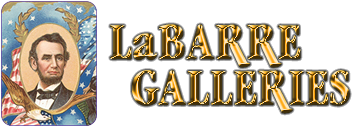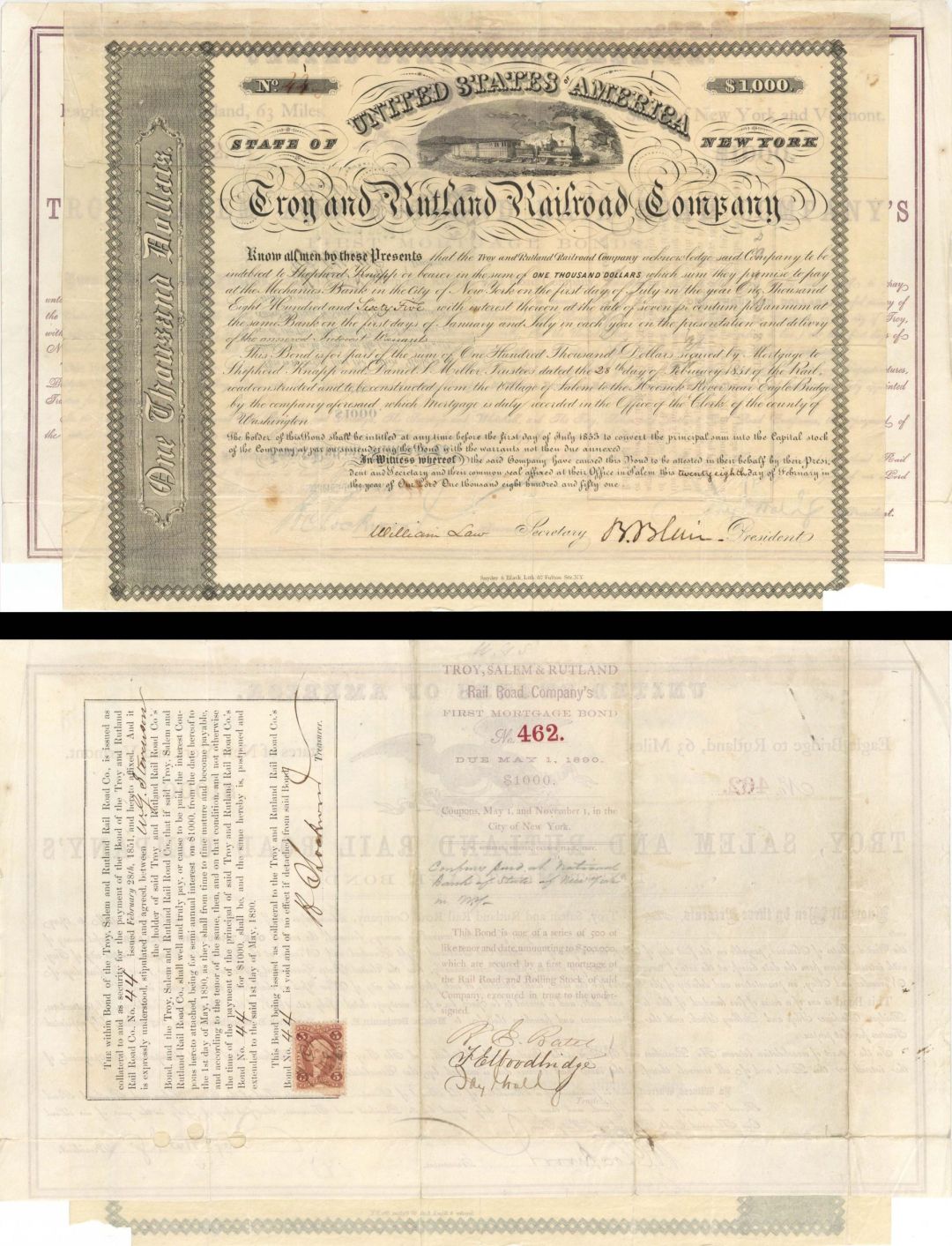Troy and Rutland Railroad Co. $1,000 Bond and Troy, Salem and Rutland Railroad Company's signed by Jay Gould - $1,000 1865 dated Bond
Inv# AG2844 BondTwo $1,000 Bonds glued together and one signed by Jay Gould. 5 cents Washington revenue stamp on back of Troy, Salem & Rutland Rail Road Company's bond.

Jason Jay Gould (1836-1892) Jason “Jay” Gould was born in Roxbury, N. Y., the son of John Burr Gould and Mary Moore Gould. He studied at the Hobart Academy, but left at age 16 to work for his father in the hardware business. He continued to devote himself to private study, emphasizing surveying and mathematics. Gould later went to work in the lumber and tanning business in western N. Y. and then became involved with banking in Stroudsburg, PA. In 1856 he published the History of Delaware County. He married Helen Day Miller in 1863 and had 6 children. It was during the same period that Gould and James Fisk became involved with Tammany Hall. They made Boss Tweed a director of the Erie RR., and Tweed, in return, arranged favorable legislation for them. Tweed and Gould became the subjects of political cartoons by Thomas Nast in 1869. In 1871 when Tweed was held on $8 million bail, Gould was the chief bondsman.
In August 1869, Gould and Fisk began to buy gold in an attempt to corner the market. During this time, Gould used contacts with President Ulysses S. Grant's brother-in-law to try to influence the president and his Secretary General. These speculations in gold culminated in the panic of Black Friday, on September 24, 1869, when the premium over face value on a gold Double Eagle fell from 62% to 35%. Gould made a nominal profit from this operation, but lost it in the subsequent lawsuits. The affair also cost him his reputation. After being forced out of the Erie Railroad, in 1879 he started to build up a system of railroads in the Midwest by gaining control of four western railroads, including the Union Pacific and Missouri Pacific. In 1880, he was in control of 10,000 miles of railway and by 1882 he had controlling interest in 15% of the country's tracks. Gould withdrew from management of the UP in 1883 amidst political controversy over its debts to the federal government, realizing a large profit for himself.
Gould also obtained a controlling interest in the Western Union telegraph company, and in the elevated railways in New York City. He was connected with many of the largest railway financial operations in the U. S. from 1868-1888. During the Great Southwest Railroad Strike of 1886 he hired strikebreakers; according to labor unionists, he said at the time, "I can hire one half of the working class to kill the other half." In his lifetime and for a century after, Gould had a firm reputation as the most unscrupulous of the 19th century American businessmen known as robber barons. Read more at https://en.wikipedia.org/wiki/Jay_Gould
A bond is a document of title for a loan. Bonds are issued, not only by businesses, but also by national, state or city governments, or other public bodies, or sometimes by individuals. Bonds are a loan to the company or other body. They are normally repayable within a stated period of time. Bonds earn interest at a fixed rate, which must usually be paid by the undertaking regardless of its financial results. A bondholder is a creditor of the undertaking.











Ebay ID: labarre_galleries